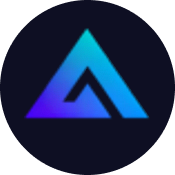In the ever-expanding universe of decentralized finance, choosing between different platforms can feel like navigating a complex maze. Waves and GMX stand out as prominent players, each with unique architectures and use cases that cater to diverse user needs. Waves offers a versatile blockchain ecosystem focused on speed, scalability, and developer-friendly features, making it ideal for building scalable DApps and smart contracts. On the other hand, GMX excels in the realm of decentralized derivatives trading, providing advanced perpetual contracts and liquidity solutions. This comparison aims to dissect their core technologies, features, and suitability for various crypto enthusiasts and investors, helping you make informed decisions in this dynamic landscape.
Short on time? Jump to Waves vs GMX Comparison
Understanding Waves and GMX ?
Waves is a community-driven, open-source blockchain platform launched in 2016, emphasizing scalability, usability, and corporate adoption. Its ecosystem supports a myriad of decentralized applications, smart contracts, and even NFTs, driven by its native token WAVES. Waves utilizes the WavesNG protocol, which aims to eliminate forks and enhance network throughput, supporting over 1,000 transactions per second at low costs. It is designed to facilitate rapid development and deployment of blockchain-based solutions, making it a go-to platform for developers seeking speed and efficiency.
GMX, conversely, is a decentralized derivatives exchange focusing on perpetual trading. Launched on Arbitrum and later expanded to Avalanche, GMX enables traders to speculate on cryptocurrency prices without holding the actual assets. Its core features include a multi-asset pool called GLP, staking rewards, and governance through the GMX token. The platform’s architecture promotes high liquidity and low slippage, tailored for traders requiring advanced financial instruments and decentralized control over their assets.
While Waves aims to create an extensive ecosystem supporting various decentralized services, GMX concentrates on providing a seamless, decentralized trading experience with sophisticated financial products. Both platforms leverage blockchain technology to decentralize control, reduce intermediaries, and foster innovation in their respective niches.
Understanding the fundamental differences in their design philosophies and technical implementations is crucial for users aiming to leverage their strengths. Waves emphasizes speed, scalability, and developer accessibility, whereas GMX prioritizes financial derivatives, liquidity, and decentralized trading security.
Key Differences Between Waves and GMX
Primary Use Case
- Waves: Waves is designed as a multi-purpose blockchain platform supporting DApps, smart contracts, NFTs, and enterprise solutions. Its architecture is optimized for speed and scalability, making it suitable for developers and businesses aiming to build decentralized applications with high throughput.
- GMX: GMX specializes in decentralized derivatives trading, primarily focusing on perpetual contracts, liquidity pools, and leveraged trading. Its ecosystem is tailored for traders and liquidity providers looking for advanced financial instruments in a decentralized setting.
Underlying Protocol
- Waves: Waves employs the WavesNG protocol, which combines leader and microblocks to enhance transaction throughput and reduce forks. The modified proof-of-stake consensus mechanism leverages leased staking to secure the network while enabling token holders to participate actively.
- GMX: GMX operates on a layer-2 solution using Arbitrum and Avalanche, leveraging their scalability features. It employs an automated market maker (AMM) model with multi-asset pools and staking mechanisms to facilitate high liquidity and low slippage in trading derivatives.
Tokenomics
- Waves: WAVES tokens are used for transaction fees, staking, and governance within the ecosystem. Initially fixed in supply, the token transitioned to an inflationary model, supporting network security and development.
- GMX: GMX's governance token, GMX, is used for voting on protocol proposals, staking for rewards, and participating in liquidity pools. It functions as both a utility and governance token, incentivizing active participation and decentralization.
Transaction Speed and Cost
- Waves: Waves offers fast transaction processing, supporting over 1,000 TPS with fixed fees that are generally low, making it suitable for high-volume applications like DeFi and NFTs.
- GMX: GMX emphasizes low-slippage trading and high liquidity rather than raw transaction speed. Its layer-2 architecture reduces fees significantly, enabling cost-effective perpetual trading.
Community and Governance
- Waves: Waves has a broad community focused on ecosystem development, with on-chain governance allowing token holders to vote on protocol upgrades and proposals.
- GMX: GMX maintains a governance model where GMX token holders can influence development, fee structures, and new feature deployment, fostering decentralized decision-making.
Waves vs GMX Comparison
| Feature | ✅ Waves | ✅ GMX |
|---|---|---|
| Main Use Case | Multi-purpose platform for DApps, NFTs, and enterprise solutions. | Decentralized derivatives trading with perpetual contracts. |
| Consensus Protocol | WavesNG (leader + microblocks, Leased PoS). | Layer-2 scaling on Arbitrum and Avalanche. |
| Token Utility | Transaction fees, staking, governance (WAVES). | Governance, staking rewards, liquidity incentives (GMX). |
| Transaction Speed | Supports over 1,000 TPS with fixed fees. | Optimized for low slippage and high liquidity in derivatives. |
| Community Governance | Active on-chain governance with WEP voting. | Token holder voting and protocol proposals. |
| Supported Chains | Mainnet Waves blockchain. | Arbitrum, Avalanche, and planned future chains. |
Ideal For
Choose Waves: Waves is ideal for developers, businesses, and users seeking a scalable, versatile blockchain platform for building and deploying decentralized applications, NFTs, and enterprise solutions.
Choose GMX: GMX is best suited for traders, liquidity providers, and DeFi enthusiasts focused on derivatives, leveraged trading, and decentralized liquidity pools.
Conclusion: Waves vs GMX
Waves and GMX exemplify the diverse spectrum of decentralized finance, each excelling in different domains. Waves offers a robust, scalable platform for a broad range of decentralized applications, emphasizing speed, usability, and developer-friendly tools. Its flexible ecosystem supports enterprise adoption, NFTs, and innovative DeFi projects, making it a versatile choice for builders and users alike.
In contrast, GMX focuses on the fast-paced world of decentralized derivatives trading, providing sophisticated financial instruments with high liquidity and low slippage. Its layer-2 architecture ensures cost-effective trading experiences, appealing particularly to active traders and liquidity providers seeking decentralized control and transparency. Ultimately, your choice depends on whether your priorities lie in building and deploying decentralized services or engaging in complex financial trading within the DeFi landscape.






